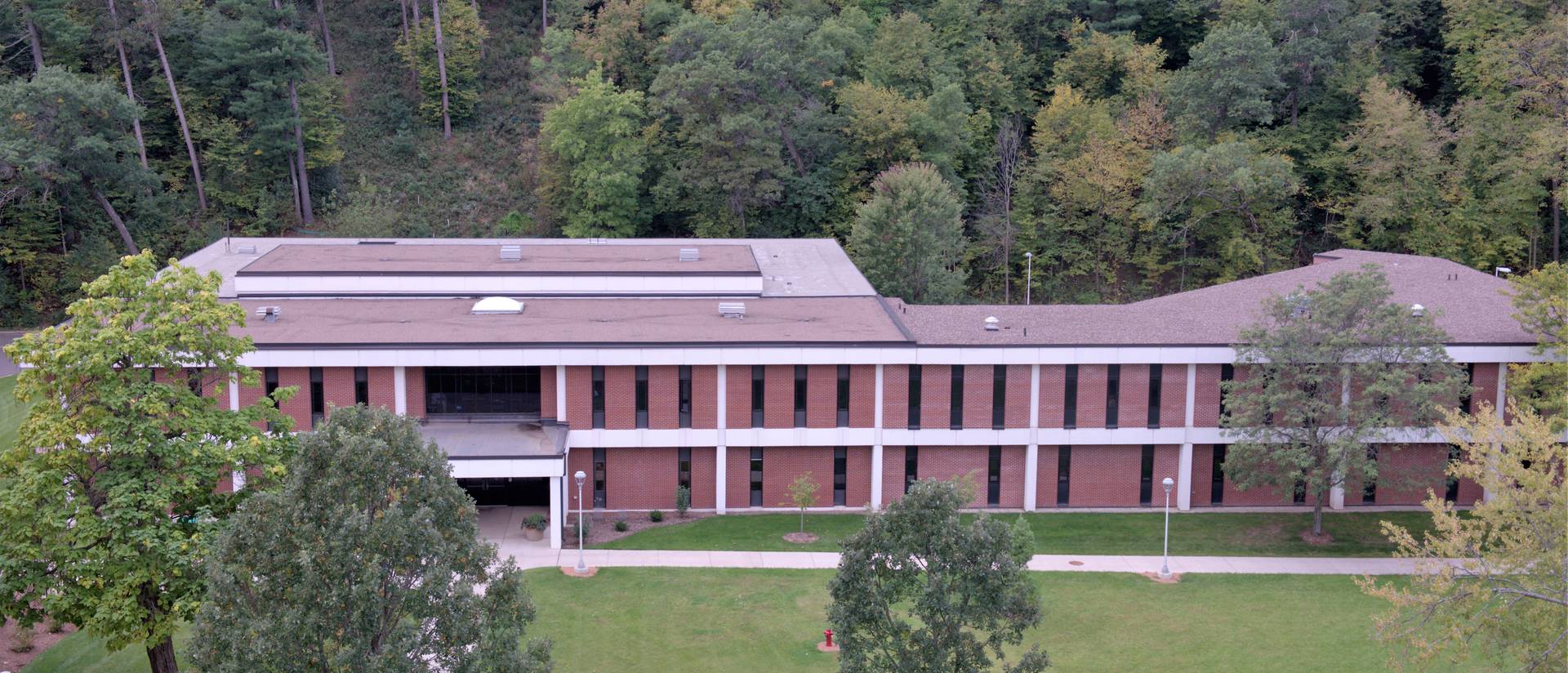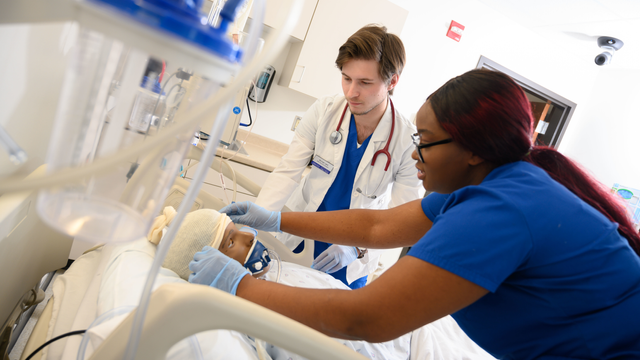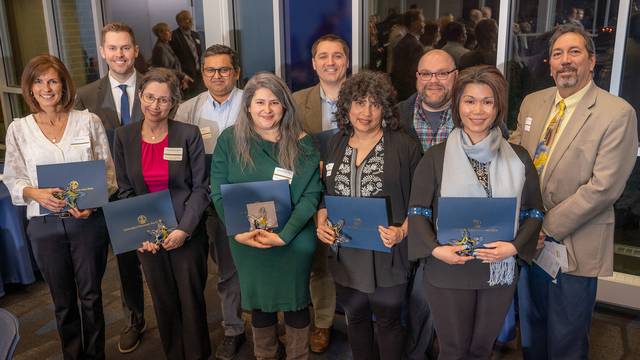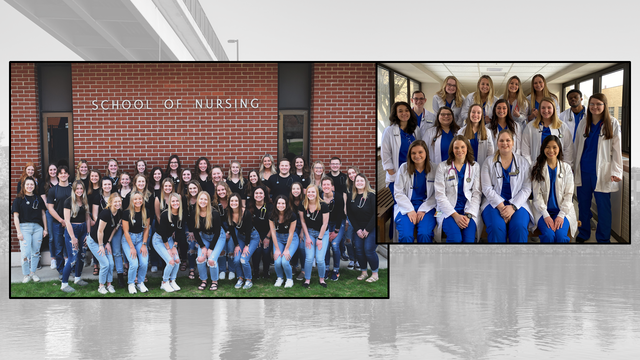This year marks a significant event in our history at UW-Eau Claire. To quote Associate Dean and Educational Administrator Emerita Dr. Rita Kisting Sparks, “Oh my! Can’t believe it has been 50 years!” We have reached the 50th anniversary of the Nursing Building, as construction was completed, and classes were held there for the first time in Fall 1969. Groundbreaking for the School of Nursing building occurred in July 1968.
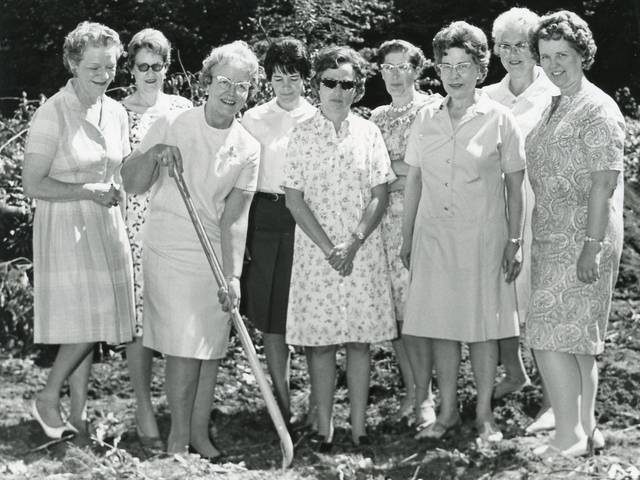
Groundbreaking ceremony for SON building
Groundbreaking ceremony for SON building
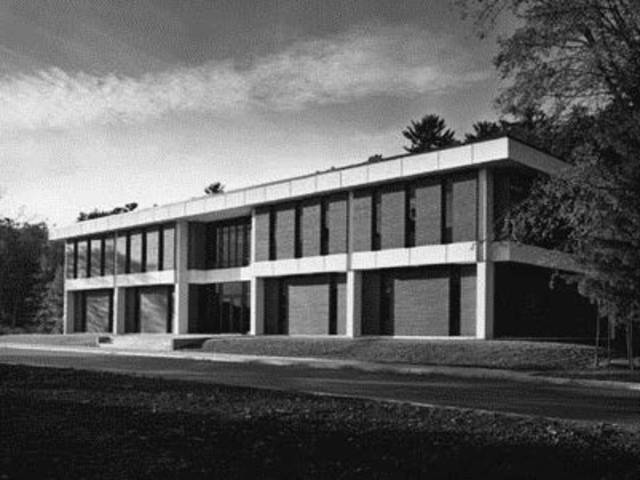
Nursing building
Nursing building
It was dedicated in April 1970, with speakers including Ms. Margaret Dolan, past president of the American Nurses Association (1962-1964), and Ms. Jesse M. Scott, the Director of the Division of Nursing, Health Resources Administration Public Health Service, of the U.S. Department of Health, Education, and Welfare.
The timing of the construction and completion of the building in 1969 didn’t exactly coincide with the start of our undergraduate nursing program. The first class of 22 sophomore nursing students was admitted and enrolled in the baccalaureate nursing program in September 1965 with 17 students graduating by June 1968. However, with the Luther Hospital diploma program in October 1965 suddenly closing and no longer accepting students earlier than anticipated (the last class graduated in August 1967), the UW-Eau Claire nursing program was asked to rapidly expand. Fifty-three students were admitted for the second class with more students added in each subsequent year to quickly reach an admission rate of 90 students to start each fall term. In 1965 there were only 3 faculty members and by 1967 there were 16. Office, classroom, and skills practice spaces were desperately needed. For the first year of the nursing program, from 1965-1966, the School of Nursing operated out of Schofield Hall while the first floor of the new Crest Commons Building on upper campus was completed for temporary use by the School in 1966.
Initially the Crest Commons Building could accommodate the nursing administrative and few faculty offices. The first floor had big classrooms with wide windows looking out onto the large grassy areas which proved to be “quite interesting and distracting” as this was where students from the dormitories often congregated to enjoy the sun. These sun worshippers frequently “forgot” that the faculty and students in Crest Commons could view their activities, according to Dr. Kisting Sparks. The building also afforded skills laboratory practice space, which housed a limited number of Mrs. Chase manikins. Faculty did not rely heavily on manikins back then as students tended to practice some skills on each other, such as inserting nasogastric tubes, starting IVs, administering injections, and giving bed baths.
With the rapid expansion of the nursing program, soon the Crest Commons Building became too limited and three mobile office facilities (i.e., trailers) were placed next to the building for faculty offices. Dr. Kisting Sparks and Associate Professor Emerita Ms. Marilyn Burgess both started teaching in the nursing program in 1967 and recalled the two years they occupied the trailers. With so many new faculty brought onboard in a short amount of time and the tight quarters, the faculty bonded quickly as they developed a pleas-ant camaraderie and learned from each other and the more experienced educators among them. As Ms. Burgess noted, “we were a family.” They also appreciated the views afforded by some of the trailer offices, as various animals could be observed wandering about. However, they also humorously remembered that the trailers lacked any type of plumbing (that wasn’t hooked up), necessitating trips to Crest Commons.
The need to hire faculty quickly for the rapidly expanding program created a bit of stress for the department chairs as they were charged with recruiting and hiring the instructors. Ms. Burgess initially was brought in as a faculty member but within three months was made the Chair of the Community Health Nursing Department. Budgets were carefully watched as Ms. Burgess recalled having to request per-mission from Dean Marguerite Coffman before making any long-distance phone calls—which was challenging when trying to recruit and hire new faculty.
Each of the three trailers tended to house up to six faculty members, necessitating the need to eventually share office spaces as their numbers grew. This created privacy issues when meeting with students in their offices (desks were situated together, front to front)—the faculty often had to ask an office mate to step out for a while.
Although they “had a great time in our trailers” and “laughed a lot,” according to Dr. Kisting Sparks, the faculty and administration were quite happy when the new School of Nursing building was completed. As Dr. Kisting Sparks further noted, “I had my own office!!!” Joining the faculty in 1969 as the building was opening was Dean Emerita Dr. Elaine Wendt. Besides offices and access to secretarial support (all were under one roof now), they appreciated the many classrooms and large skills laboratory spaces afforded by the new building. They credit Dean Marguerite Coffman and Associate Dean for Student Affairs Berniece Wagner with doing a tremendous job in planning the building.
Acknowledgment also was given to Dean Coffman, with her strong army back-ground, in ensuring that the Nursing program was held in high esteem on campus. Dean Coffman was adamant that nursing faculty were integrated with the rest of the University faculty. She monitored to make sure they were on University committees and attended the Artists Series and Forum lectures on campus. She chided faculty when they went off for lunch or dinner together after class or clinical rather than dining and socializing with the broader University faculty at popular hangouts (the Flambeau). Dean Coffman was known to say they had to “play together to work together,” according to Ms. Burgess. Similarly, as found in Dean Coffman’s writings from the 1960s, she “hoped that the students in the School of Nursing, other students, faculty in the University and the community will view these students as students in the University who are studying nursing, not as a segregated group of ‘student nurses.’”
Admittedly, despite these efforts by Dean Coffman to have Nursing integrated into the rest of the University, the interviewed faculty acknowledged that some on campus weren’t even aware of the nursing program. In terms of nursing’s acceptance on campus, they also noted that nursing brought in a lot of women faculty, making it hard to differentiate between issues of being a woman versus being a nurse on a university campus. As one of them indicated, she would say something in a University meeting and be ignored; whereas a male faculty person from another department would state the same thing and be told, “good idea.”
Nursing also had to navigate issues associated with the different levels of preparation for nurses. We were educating BSN-prepared nurses in a community which had had a diploma program for many years. Some in the community “had a hard time” with the change and it took a few hospital staff, although helpful, “a while to get used to baccalaureate nursing education and students,” according to Dr. Wendt and Dr. Kisting Sparks. There were people on campus and in the area who believed nursing belonged in a technical school rather than on a university campus.
The technologies utilized in classroom teaching and the skills laboratories evolved over the years. The early faculty relied heavily on overhead projectors, slides, and movie projectors (they had to thread the films into the projectors themselves). A few depended on chalk and blackboards, but most preferred the overhead projectors. Unlike today, the skills laboratory had only a limited number of manikins and not many training models. Faculty were responsible for setting up the space, checking out equipment lent to students, including blood pressure cuffs and community health bags, and ensuring the equipment was properly calibrated. Today we are fortunate to have the assistance of directors and coordinators for our Clinical Learning Center in Eau Claire and in Marshfield.
When computers became available, interested faculty initially had to purchase their own. The arrival of the test scoring service on campus to electronically correct exams was lauded as a wondrous event in their lives. Hooray for bubble sheets and number 2 pencils! Dr. Wendt also appreciated the electronic library databases that by the 1990s took the place of searching through the old library card catalog and print indices for the latest literature.
Following the original construction, several changes have occurred to the building structure, most notably being the completion of a west side addition in 1985. This addition provided more office spaces (it had gotten to the point where faculty were once again sharing offices), clinic exam rooms, a student lounge, the Learning Resource Center (LRC), a computer laboratory, small classrooms, and seminar rooms with teleconferencing equipment. Since the late 1980s, multiple remodeling projects have occurred as three distance education classrooms were created, along with multiple simulation rooms.
More changes are expected in the coming years as construction begins on a new Science and Health Sciences Building to replace L. E. Phillips Science Hall (contingent on funding for phases 1 and 2 of the project), to be located in the footprints of Katherine Putnam Hall and Katharine Thomas Hall. As an interesting aside, Ms. Burgess lived in Katharine Thomas Hall for about a month when she initially arrived in Eau Claire, until she bought a house in the area; and Dr. Wendt stayed in the Hall while she interviewed for a faculty position. Nursing is expected to have space in the Science and Health Sciences Building for a simulation center.
With marking the 50th anniversary of the Nursing Building, it was not-ed that unlike most other buildings on campus, it does not have a “name.” Efforts have been made over the years without success to name the Building, for in-stance, the Marguerite Coffman School of Nursing. Interested alumni are welcome to contact the UW-Eau Claire Foundation (https://foundation.uwec.edu/) for information regarding the process to name the Building after Dean Coffman or others.
Nevertheless, regardless of where it is located or what a building is called, Nursing “is not a building” as Dr. Kisting Sparks pointed out. We are looking forward to many more years of Nursing being a strong part of the excellence of the University of Wisconsin-Eau Claire.
The 50th anniversary will be celebrated at the Nursing Alumni Homecoming Walk on October 12, 2019. Hope to see you there!
